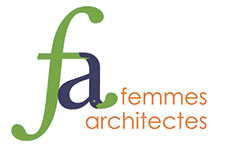Quito Metropolitan Corridor International Competition Re-Inspire Quito
Team: YES innovation, RAMA study, RAIZ study, GMG, G. Naranjo, FAU-UCE, FADA-PUCE, Urban Data.
-One of the winners of 25 competing teams, in the first phase: ideas. This allowed us to continue to the second phase of the contest.
-First place winners in the second phase: preliminary projects.
The action plan includes:
Three goals: Recovery of public space, projection of the corridor as an idea of integration, and repopulation of the central area of Quito, all of them linked to urban and resilient sustainability.
Nine transformation actions: Nature integrated into the urban fabric; rebalanced and multicenter population growth; multi-scale and multipurpose social inclusion; hybrid and multi-actor economic development; integrating corridor removed center of the americas; public computer and living space; housing policy as a reintegration vector; ordinance adapted to the territory and by participatory process based on the collective intelligence of the city actors.
Four transition strategies: Strategy for growth: DENDRITE City, this model allows the city to grow from the central structure, strengthened in the metropolitan corridor. It allows cross articulation by branching - transverse pathways - and by units - neighborhoods - that adapt to local geomorphology - streams and risk areas. Strategy for sustainable development: BIOMOTOR: The city structures its natural capital through the creation of the HUIRACCHURO urban Natural Geopark. This green fabric helps regulate the climate of the urban surface and mitigates urban pollution. Infrastructure strategy: Active mobility articulator corridor, multimodal street design. Densification strategy: Centralities with ecological, solidary and inclusive neighborhoods.
Ten centralities: Seven sustainable urban centralities and 3 connecting centralities: railway axis, machángara and metro
Two implementation tools: a housing policy for all and an inclusive ordinance applicable at various scales considering the geographic and urban characteristics of the city.
Detailing urban-architectural projects: examples
Partial Plan "El Recreo": The city in this sector needs to structure more meeting spaces and urban life. Being a commercial meeting area requires not only this, it is necessary to have urban quality areas that include intermodal mobility areas.
Project: Parish Articulator of the South: it works as a multifunctional link between the metropolitan corridor and the first section of the railway linear park. It is a public-private partnership project. The project integrates flexible housing for small and medium families, students, professionals, inclusive housing and housing for older adults.
Partial Plan "Quitumbe": In this area, planning is required with a vision of the future that, without being closed, allows collective and community developments that seek spaces to build and innovate new urban development models. It is also a potential engine for economic development in the south of the city.
Project: SOUTH CORPORATE COOPERATIVE PARK: It will group different actors of the popular and solidarity economy such as credit unions, associations and community organizations, it proposes commercial exchange equipment, shared work spaces, business incubator. It also proposes collective housing, in this way the life of the neighborhood flows freely.













